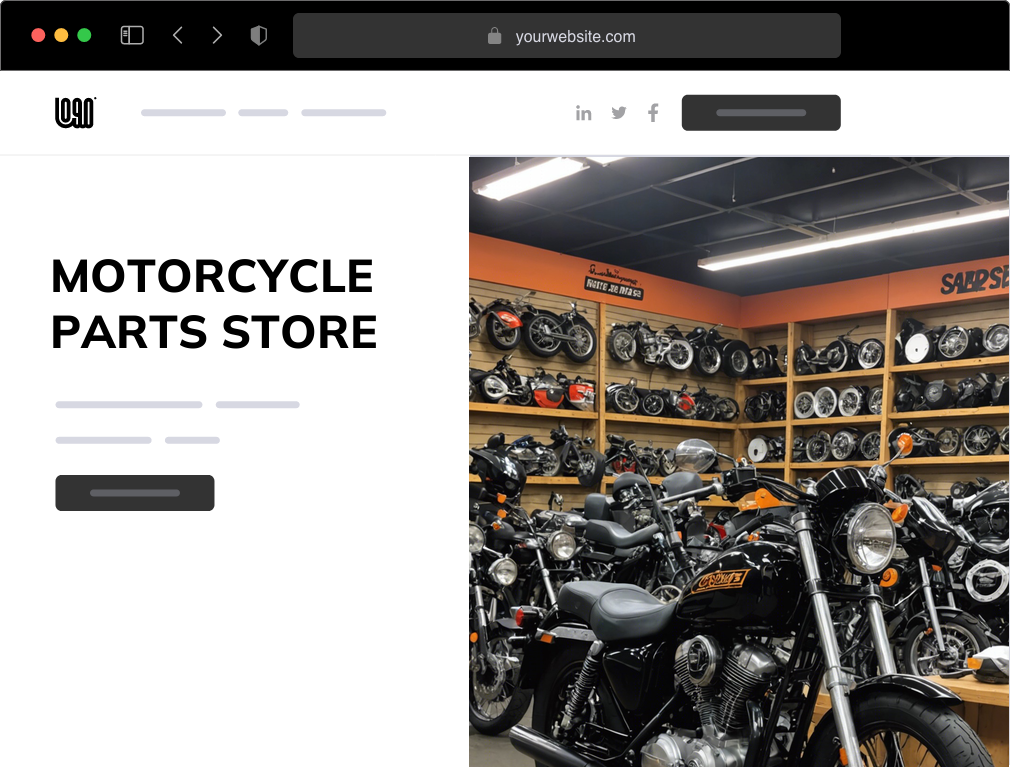Grasping Motorcycle Gears: Just How to Maximize Your Riding Experience
In the world of motorcycling, understanding the art of equipment control is important for enhancing your riding performance. Correctly utilizing and understanding bike gears can considerably affect velocity, gas, and control efficiency, transforming an ordinary adventure into a smooth, electrifying trip. By integrating exact shift timing and adapting gear choice to numerous roadway conditions, riders can guarantee ideal engine performance and safety. The nuances of clutch control, throttle sychronisation, and gear mechanics bid a much deeper exploration, promising to open the complete potential of your device. Exactly how can these methods be taken advantage of to really maximize your riding experience?
Understanding Equipment Mechanics
At the core of motorbike dynamics, gear auto mechanics play a crucial duty in transforming engine power into motion, ultimately determining rate and control. The equipment ratios, thoroughly made, identify the relationship in between engine transformations and wheel turns, affecting velocity and fuel efficiency.
Recognizing gear mechanics begins with identifying the value of the transmission, which houses numerous gears of differing sizes. These gears engage via a procedure known as meshing, where teeth of various gears engage to send power.
In addition, the principle of gear shifting is integral to maximizing efficiency. Timely and smooth changes make certain that the engine operates within its ideal power band, avoiding unnecessary pressure and enhancing longevity (mx gear nz). By understanding these mechanical complexities, riders can attain an unified mix of performance, power, and control, boosting their riding experience
Timing Your Changes
Change timing proficiency is necessary for maximizing bike efficiency and improving the riding experience. Correctly timed changes guarantee that the engine operates within its optimum power band, which is vital for keeping control, accomplishing smooth velocity, and guaranteeing the durability of the motorcycle. Bikers must create an instinctive sense of when to change gears, which entails comprehending the partnership in between engine revolutions per minute (RPM) and rate.
To master shift timing, pay close focus to the engine's noise and feel, as these offer important clues about when to alter gears. The suitable change factor generally takes place when the engine approaches the upper series of its power band without reaching the redline. Changing prematurely can cause an absence of power, while shifting far too late may trigger unnecessary engine strain
Furthermore, roadway problems and riding design influence shift timing. In contrast, during highway riding, fewer shifts at greater rates can be a lot more appropriate.
Enhancing Fuel Efficiency
While understanding motorbike equipments is critical for performance, boosting gas effectiveness is just as important for both environmental and financial factors. Optimum fuel consumption not only minimizes operational expenses however also lessens the ecological impact of riding. To accomplish this, one have to understand the intricate partnership in between equipment option and engine performance.
Riding in a greater equipment at reduced rates can lead to engine hauling, which is destructive to both fuel economy and engine health and wellness. Conversely, riding in lower gears at high speeds results in unnecessary gas intake.
Additionally, routine maintenance plays a crucial function in fuel efficiency. Making sure that the motorbike is well-tuned, with clean air filters and effectively pumped up tires, can improve aerodynamics and decrease fuel wastefulness. Moreover, taking on a riding design that embraces progressive acceleration and see post smooth slowdown can add to much better fuel economic climate.

Techniques for Smooth Transitions
Achieving smooth gear changes is basic to boosting the riding experience and guaranteeing the durability of a bike's transmission system. Appropriate equipment moving not only adds to a seamless ride yet also lessens damage on the mechanical components. To master the art of smooth shifts, riders need to concentrate on a couple of crucial strategies.

Second of all, clutch control plays a pivotal function. Involving and disengaging the clutch smoothly calls for technique. The clutch bar ought to be launched slowly, enabling a smooth transfer of power from the engine to the wheels without creating a jolt or sudden motion.

Adjusting to Roadway Problems
Navigating varied road conditions is an important skill for any kind of motorcyclist intending to maintain control and safety and security. Whether you're riding on damp surface areas, crushed rock roads, or navigating doglegs, your capability to adjust your gear usage and riding strategy is extremely important. Understanding exactly how to readjust your gears appropriately can substantially influence traction and security, making sure a more secure trip.
On damp roads, it is recommended to preserve greater equipments to decrease torque and lessen wheel spin. This approach assists maintain hold on slippery surface areas, permitting smoother velocity and slowdown. In comparison, when riding on gravel or uneven surface, lower equipments are preferable. Lower gears offer far better control and permit you to react even more promptly to unexpected changes in the roadway surface area.
Sharp contours demand accurate gear management to balance speed and control. Downshifting prior to getting in a contour can assist keep momentum while making certain the motorcycle stays secure throughout the turn. Regular method in different problems enhances your capacity to learn the facts here now respond and predict to adjustments in roadway appearance and incline.
Verdict
Grasping motorcycle equipments dramatically boosts the riding experience by boosting fuel, control, and velocity efficiency. Adjusting gear option to different roadway problems, such as utilizing greater gears on wet surface areas and reduced equipments on crushed rock, more enhances handling and security.
Understanding gear technicians starts with recognizing the relevance of the transmission, which houses multiple motorcycle padded vest gears of differing sizes. These equipments communicate via a process known as meshing, where teeth of different equipments involve to transmit power (moto parts nz). Mild adjustments to the throttle during gear shifts can protect against jerky motions and keep a regular riding rate
Whether you're riding on damp surfaces, crushed rock roadways, or navigating sharp turns, your ability to adapt your equipment use and riding technique is vital. Adapting equipment option to different roadway conditions, such as using greater gears on damp surfaces and lower equipments on gravel, further improves handling and safety.
Comments on “Explore the Latest Motocross Gear NZ for every single Level of Rider”